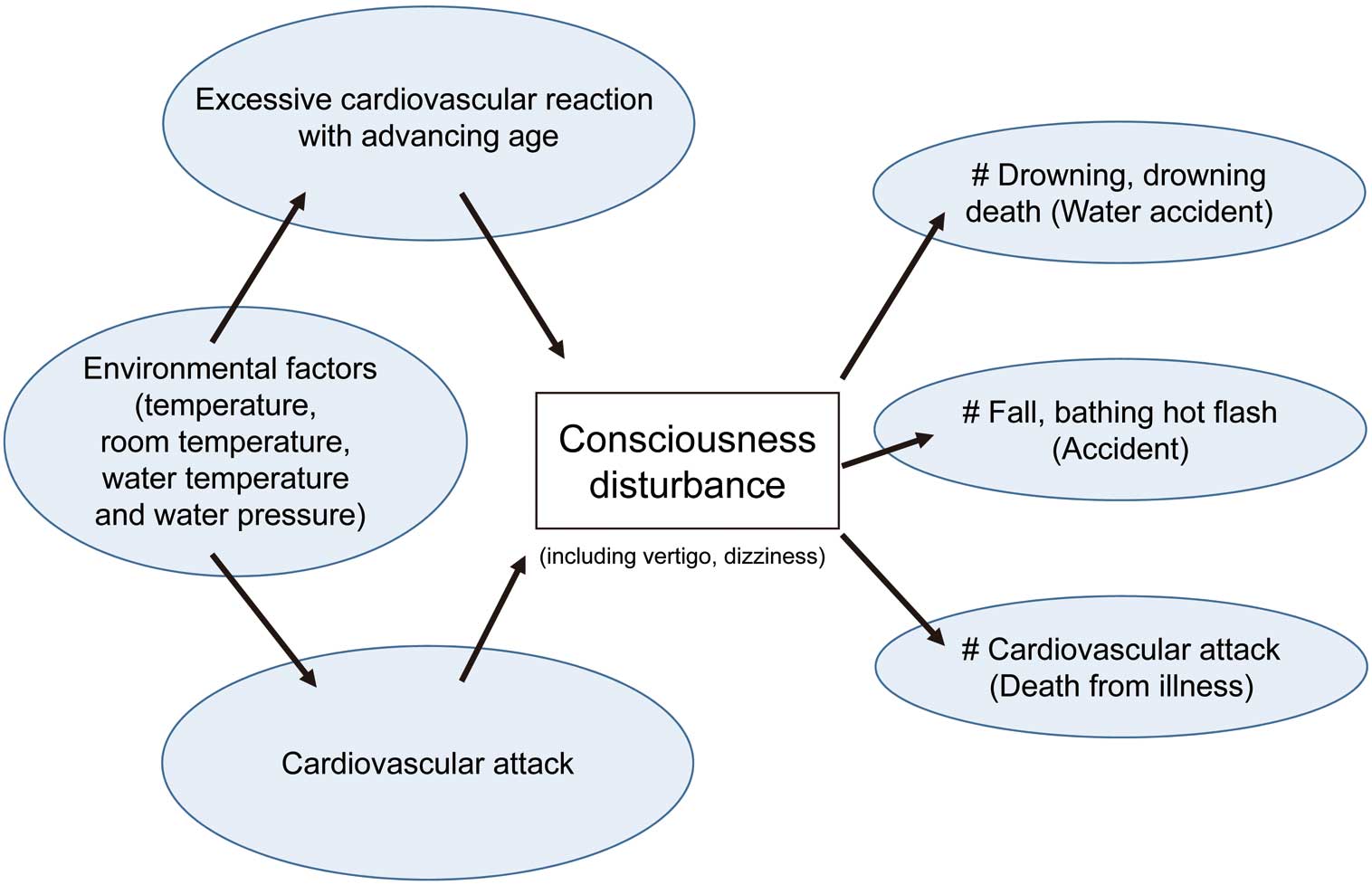2017 Volume 81 Issue 8 Pages 1096-1097
2017 Volume 81 Issue 8 Pages 1096-1097
Bathing every day or more frequently is associated with good health status,1 but sudden death during bathing has been reported to occur particularly during normal daily life of the elderly (≥65 years) in Japan.2–6 A trend towards growth in the elderly population is seen mainly in developed countries, and in Japan the growth rate of the elderly population is considerably higher than elsewhere. Since 2013, Japan has been a super-aged society in which more than 25% of the population is aged 65 years or older. Over 120,000 cardiac arrests in prehospital settings occur annually in Japan, and approximately three-quarters of them are in the elderly population.7 Funada et al reported that survival with favorable neurological outcome in the elderly population with out-of-hospital cardiac arrest (OHCA) has been improving in Japan.8 Such survival is mainly dependent on whether the OHCA is witnessed or unwitnessed, with initial shockable rhythm or not, and bystander CPR is performed or not. However, the OHCA survival rate is still low, and further assessment of factors associated with OHCA occurrence and outcome is needed. Accidental OHCA during bathing has increased and these increased numbers of deaths are mainly in the elderly population. The number of deaths by drowning or other cause while immersed in the bathtub is already more than that from traffic accidents in Japan. To avoid and prevent accidental deaths, we have to know the detailed characteristics of both the accidents and the deaths.9
Article p 1144
Takahashi explained the mechanism of sudden death during bathing as follows (Figure). Because of differences in temperature, such as atmospheric temperature, room temperature, and water temperature, and effects from water pressure, and increased cardiac and vascular reactivity a cardiovascular attack (e.g., hypotension, bradycardia, and myocardial ischemia attack) occurs followed by consciousness disturbance. If the OHCA occurs while in the bathtub, it can lead to drowning or drowning death accident, and if outside the bathtub, it can lead to a fall accident or bathing hot flash symptom.10 Bath-related sudden cardiac arrests frequently occur in Japan, but mortality information has not been sufficiently reported. Kiyohara et al reported that bath-related cardiac arrests mainly occur in winter, and the outcome of victims was exceedingly poor.11

Mechanisms of sudden death (#) during bathing.10 There are not a few accidents associated with bathing among the elderly population in Japan. The most frequent symptom is disturbance of consciousness. (Reproduced with permission from Tokyo Metropolitan Geriatric Hospital and Institute of Gerontology.10)
In this issue of the Journal, Suzuki and colleagues12 report on their prospective cross-sectional observational study conducted in Tokyo Metropolitan, Saga Prefecture and Yamagata Prefecture between October 2012 and March 2013. This study is the first report based on a prospective survey of all events related to bathing. Of the bath-related events, 33% were identified as cardiac arrest events. The bath-related crude mortality rate during the winter season was approximately 10 (deaths/100,000 population). They reported that most cardiac arrest events related to bathing occurred in a bathtub filled with water when victims submerged their faces. It suggests that drowning plays a crucial role in the etiology of bathing-related cardiac arrests.12 The drowning is an important cause of OHCA.
The prevention of bath-related OHCA is most important. The Japan Resuscitation Council Resuscitation Guidelines 2015 provide some preventive countermeasures specific to bath-related OHCA: (1) warm the bathroom and dressing room in order to reduce temperature differences between the water and the ambient air in winter; (2) refrain from bathing in hot water for a long time, and take a half-body bath instead of a deep bath; (3) family members should pay special attention to elderly people with a high risk of sudden heart attack during bathing; (4) avoid bathing just after the consumption of alcohol or a sleep-inducing drug; and (5) install an alarm system that can make contact with person(s) outside the bathroom.13
Conflict of Interests: None to declare.